Flashbook Inquiry Review Designs
OVERVIEW
Flashbook is the first platform dedicated to solving tattoo artists' inquiry management challenges. Artists often face disorganized booking workflows, and our cornerstone feature for reviewing inquiries streamlines the process, creating a focused environment for reviewing inquiries that ensures no project is missed, and client relationships are maintained.
PROJECT GOALS

Provide a speedy way to review inquiries and move them along the booking pipeline

Streamline responses so that clients can better understand how their inquiry is received and the artist-client relationship is healthy and friendly

Create a clean and intuitive dashboard to view all inquiry information in one place, at a glance, to make quick decisions
LESSONS & OUTCOMES

Sometimes the best designs come when you add some constraints, simplify the problem, and reduce the mental load

Artists knew they were losing projects and hurting client relationships. We listened to these concerns and were able to modify designs to help maintain those relationships without increasing development time.

Design for scale - including things like templates made it easier for artists to scale and grow their business, reviewing more inquiries quicker.
ROLE
Lead Product Designer
User Research, Wireframing, Prototyping, User Testing, Full Fidelity Designs
MY INPUT
- Set up and conducted user interviews with artists and photographers
- Created journey maps based on research findings
- Created wireframes in coordination with beta testers
- Built prototypes, conducted user tests, and facilitated handoff to engineering
- Established Flashbook's business plan aligning design goals and iterations with Flashbook’s planned trajectory.
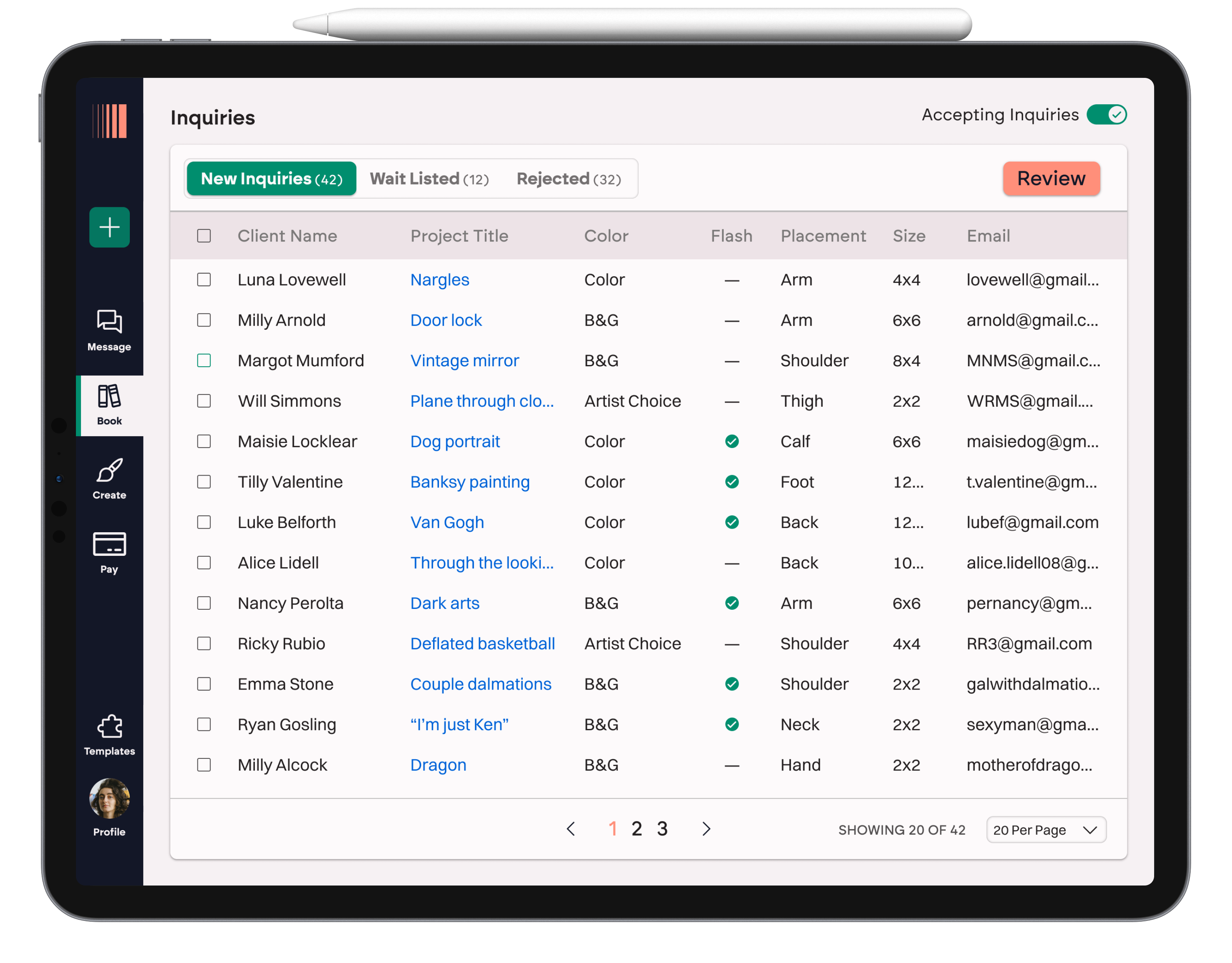
Client Inquiry Hell
Currently, tattoo artists are living in a special kind of inquiry hell. They get emails, texts, form responses, Instagram DMs and comments, all of which include some sort of inquiry regarding a new project. Even for smaller artists, the inquiry management process often proves to be overwhelming. For larger artists, inquiry management is generally the very first thing they complain about. It takes up a massive chunk of their time and all of that time is unbilled time when they could have been working on art.
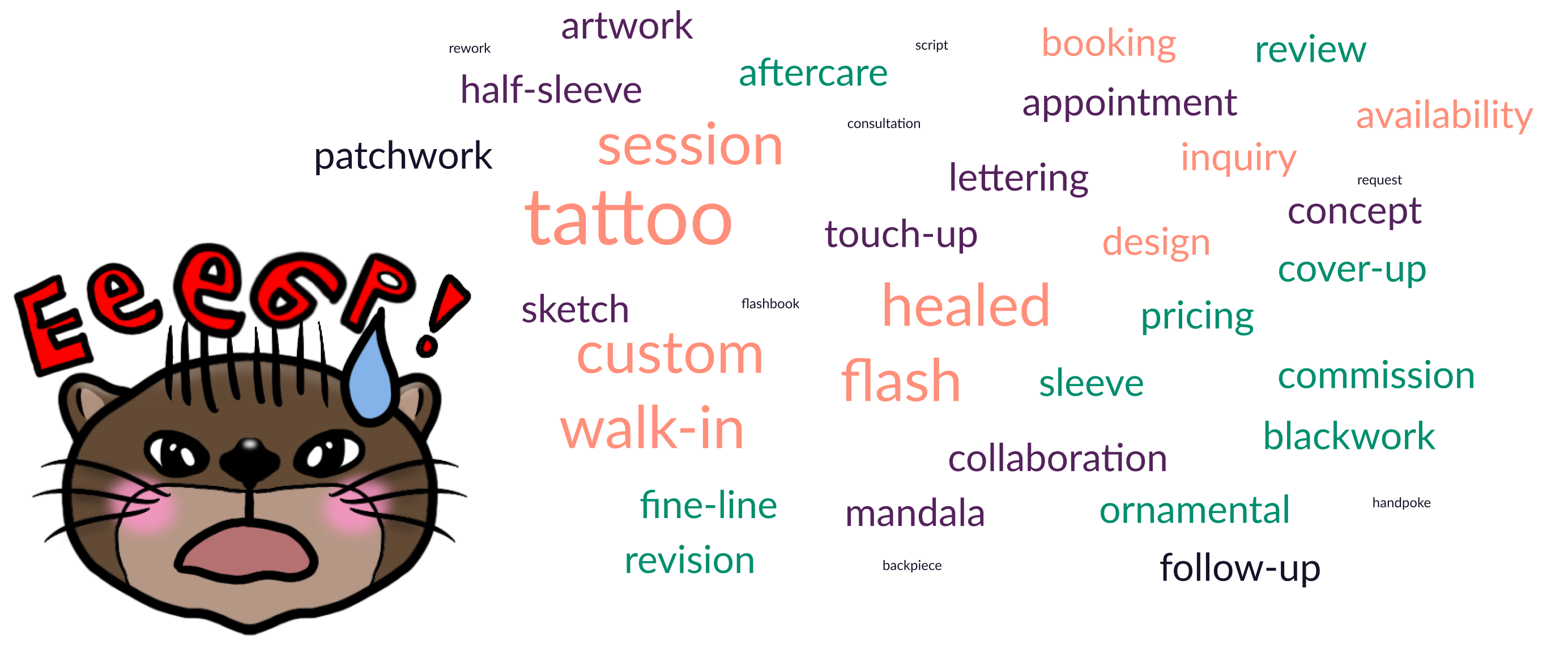
The current inquiry chaos can sometimes mean more than just lost time, though. Because artists are trying to manage so many different information streams for booking, the chaos can result in lost project opportunities. Dream projects might fall through the cracks, costing artists money, and enjoyment in their work.
Our goal at Flashbook was simple, but complex: create a centralized tool that gathers, organizes, and simplifies inquiry management, allowing artists to make quick decisions without sacrificing client experience. Flashbook would be the new inquiry hub, the new standard for how clients could communicate with artists.
A Window to the Artist's Mind
Before diving into designs, I reached out to a dozen local artists, each with varying clientele sizes, to set up interviews, create a user testing pool, and obtain a thorough understanding of their booking flows. I also set up time to do some observational field studies, and asked half of the participants to complete a diary study. In addition to tattoo artists, I set up interviews with a handful of photographers, a target demographic for Flashbook in the future. Every step of our design process we've tried to account for scaling in the future and ensure that our designs can be broadened to fit other commission-like industries.
In each of our interviews, we heard a few common refrains - Inquiries were often missed or lost in social media DMs, the back-and-forth to gather project details was inefficient, and artists were too busy to be able to read through and respond to every inquiry they received.

We've Got the Map!
Prior to wireframing, I put together 4 journey maps for the various paths we identified project booking would take. We concluded that artists would book projects in up to 4 different ways.
- Standard Customs: A client inquires about a custom project through the normal channels (filling out the inquiry form on Flashbook).
- Flash: A client would select a project from an artist's available flash and book immediately.
- Non-Standard Custom: A client reaches out in a non-traditional way - Maybe they respond to a post on Instagram or a close friend reaches out via text. Artists would need a way to create a project from scratch since these inquiries would not flow into the Inquiry hub in Flashbook.
- Touch-ups: We needed to be able to classify touch-up requests separately from standard booking processes. Touch-ups still needed to utilize our booking system, but they often take priority over other inquiries and should be separated.
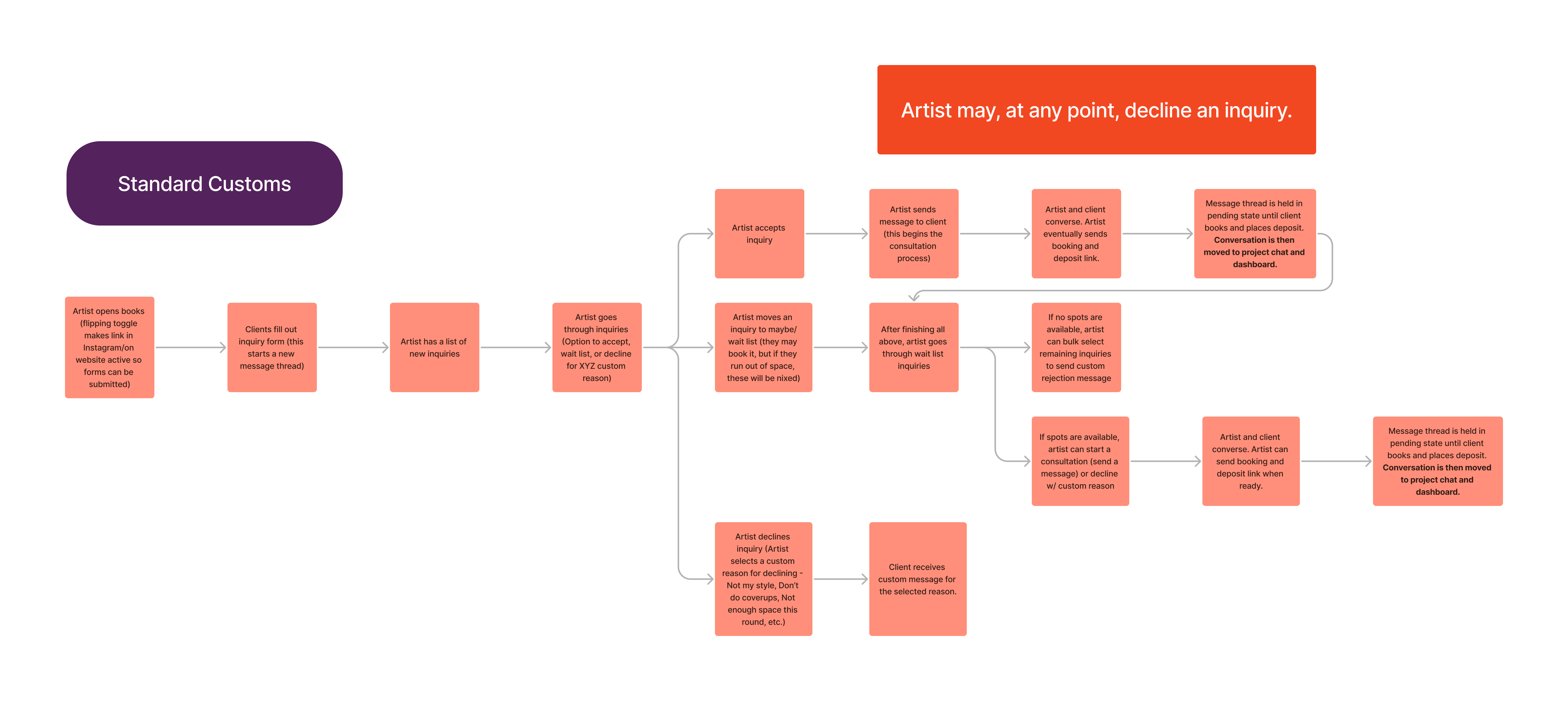
Woah, Partner. Slow it Down.
I got a little excited. When I moved to wireframes, I tried to solve every problem artists had all at once. What can I say? I'm tremendously empathetic and solving problems for others energizes me. My first wireframes were pretty cluttered. It's important in design to break things down and solve one problem at a time. Keep in mind, users should only be trying to accomplish one task at a time.
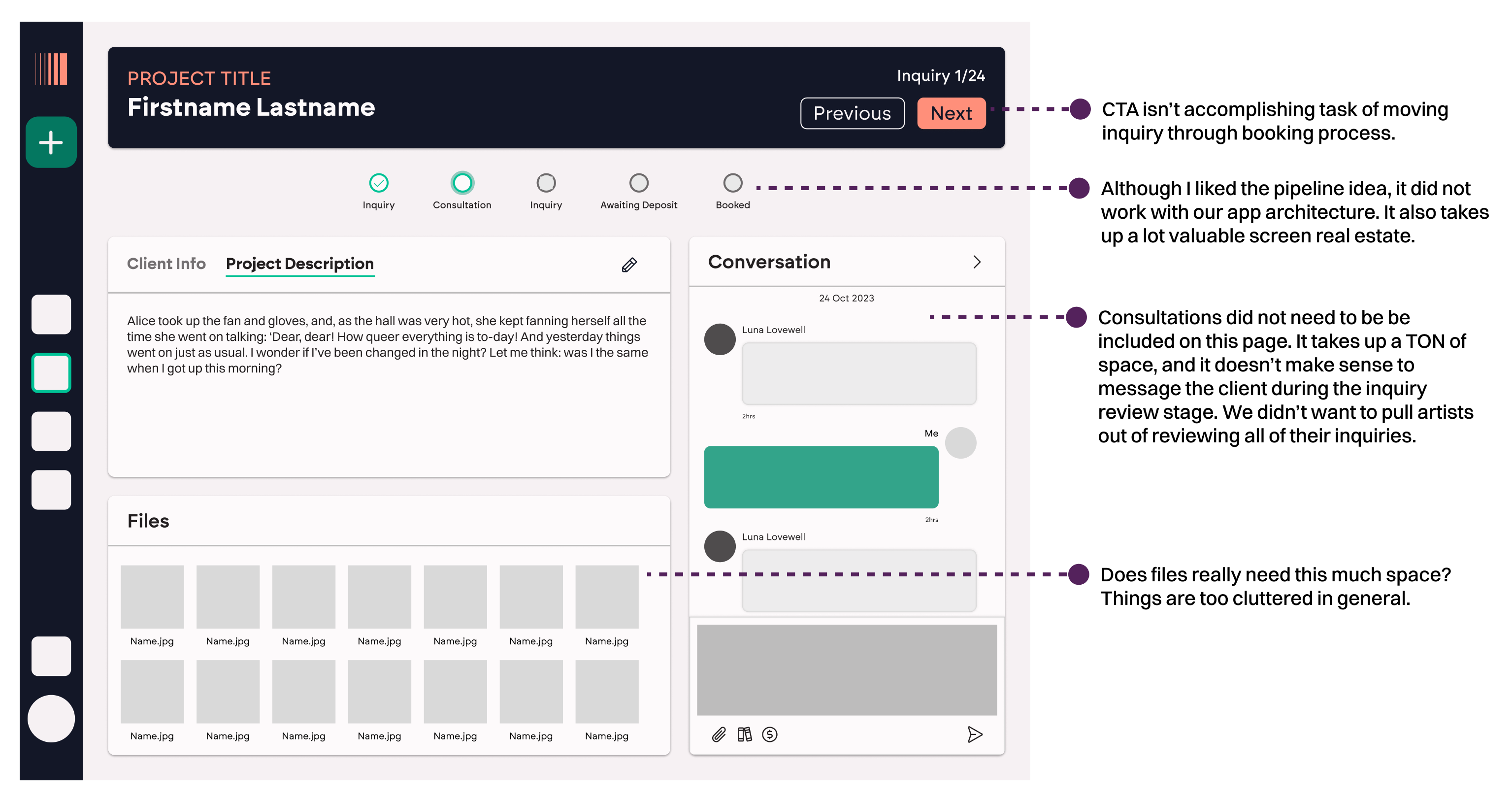
Sometimes it can be helpful to just get all of the ideas out though. From these early wireframes I learned that we needed an entirely separate section of the app for consultations. I also knew I wanted to keep the pipeline idea, but needed to shift where the pipeline takes place.
Custom but Not Custom
Our eventual goal is to allow artists full customization of their inquiry forms. But for our beta, and in an effort to get the app out as soon as possible, we wanted to find a compromise.
To determine what info to include in inquiries (i.e. what info artists are asking clients to provide) I sent out surveys to our user research group to gather what information each artist asks for. I then sorted the responses into affinity maps of sorts.
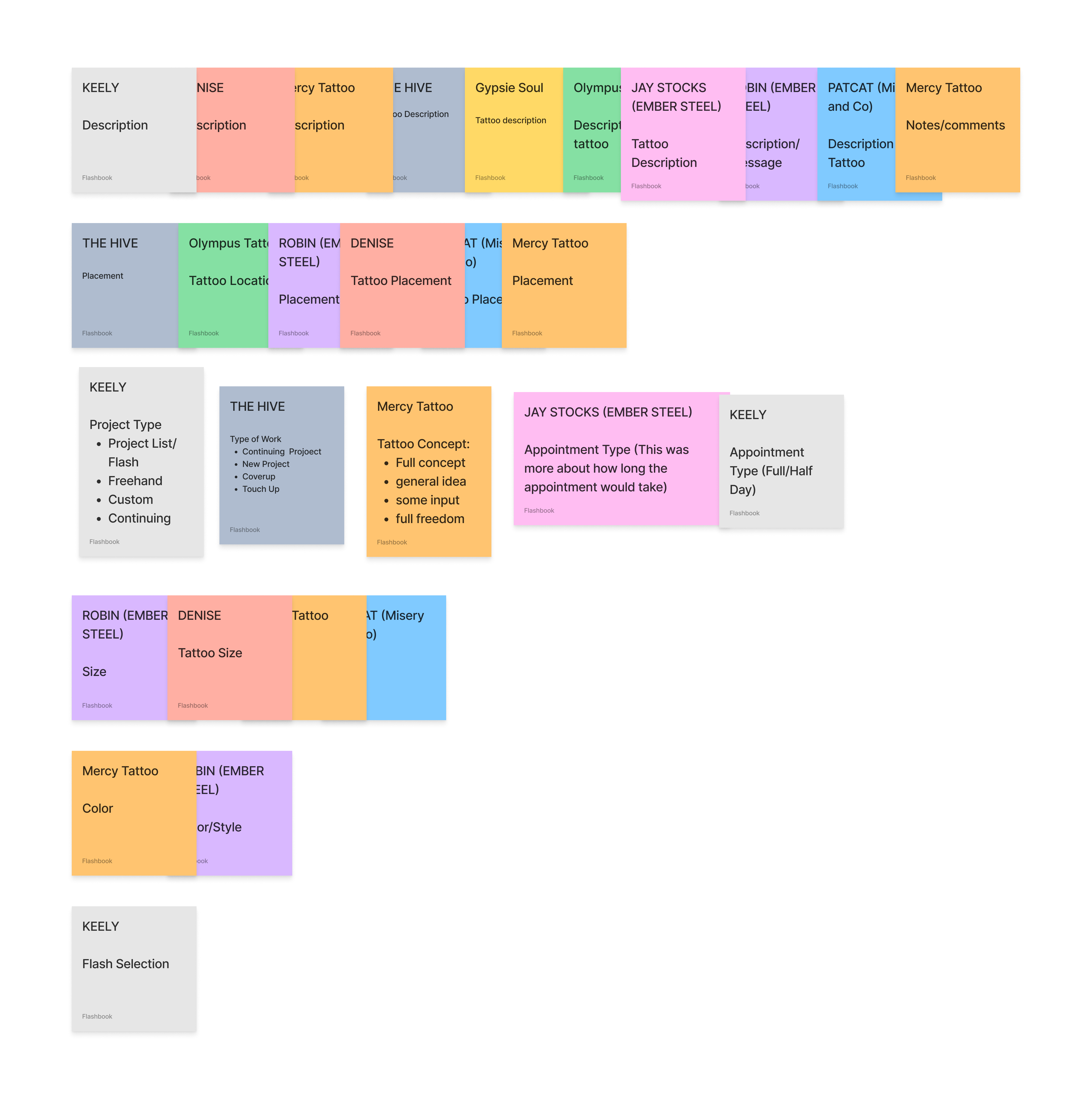
From these, we determined what information requests were most important to artists, and decided to allow artists to select from a list of questions to include on their inquiry form. They wouldn't be perfectly customizable forms, but they would allow for some customization while easing the engineering requirements on our end. Our research showed that we could cover 90% of artists' information needs in our test group with the pre-defined questions we provided.
Ultimately, we decided that we can add additional questions in the future if needed in order to close sales leads. But for now, we can avoid the engineering load of providing fully customizable forms just yet.
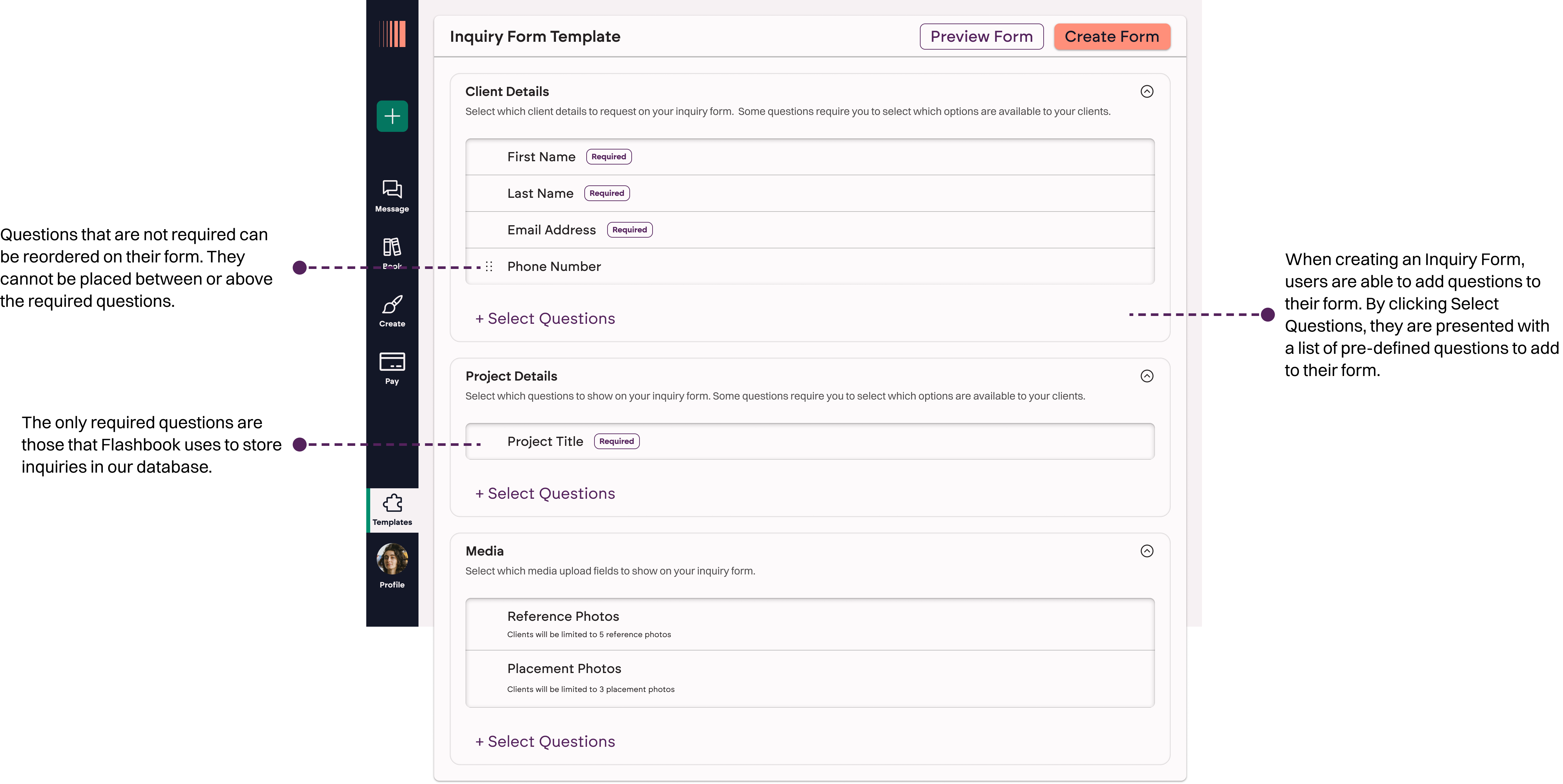
The Final Product
The final design of Flashbook’s Inquiry Review feature was the first table design in Flashbook. It set the stage for how each table would work throughout the app. It cleanly pulls all inquiries into one place. From the table, artists are able to launch a review sequence and work through inquiries in a distraction free environment.
Flashbook's current beta users are already reporting a 40% reduction in time spent reviewing inquiries. Moreover, artists are lauding their better relationships with clients. Because they can bulk send emails to prospective clients with reasons for declining projects, clients aren't getting frustrated as often.
With Flashbook, artists can spend more time on their art and reduce the administrative load.
Try it Out
Expand the prototype below and navigate to the Inquiry page located in the Book section of Flashbook. From there, click review and accept your first inquiry. You'll be able to send a message to start the consultation process. The prototype can also be accessed at the following link: https://www.figma.com/proto/Jaq75uAYWafimGEFQnfoBk/Inquiry-Review?node-id=5-2681&t=WkuvLDBabFh4MXIP-1
** Prototypes work best on desktop or tablet. These prototypes are neither comprehensive, nor perfect - stick to the task of accepting your first inquiry.
You can also explore the final designs in the file below.
